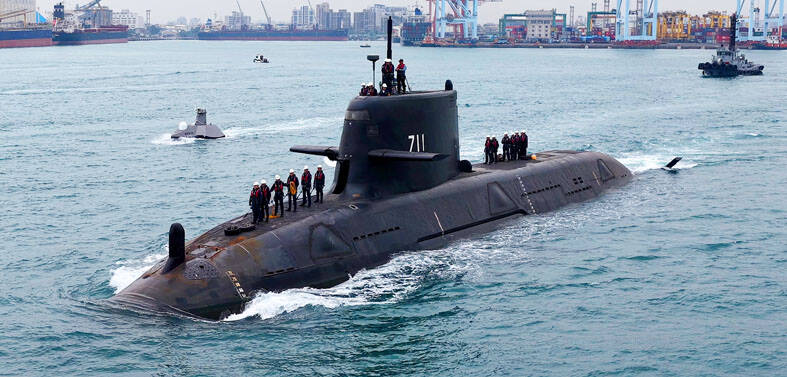Peace Boat, a Japan-based non-governmental organization (NGO) known for its efforts to promote world peace through luxury liner cruises, is kicking off its 46th Peace Voyage with Taiwan as its first stop, the organization's representatives said at a press conference yesterday.
The trip is being sponsored in Taiwan by the Peacetime Foundation. Peace Boat is known for its educational global sailing voyages, on which passengers promote messages of peace and interact with local NGOs and people to increase collaboration for peace worldwide.
This summer's three-month trip will mark the 46th Peace Boat global voyage since the organization's founding in 1983. The trip's title is "Olympic Truce 2004," reflecting the organization's hope of bringing an end to conflict around the world.
Historically, explained Peace Boat executive committee member Mari Kushibuchi, the original Olympics were a time when all the Hellenic nations came together in a truce, and all conflict between the countries was suspended for the duration of the games.
With this voyage, Kushibuchi said, the organization hopes to inspire people to put an end to violence, in the spirit of the ancient Olympic games.
"There has been a great amount of violence in the world recently, with the constant battling in Iraq and in Asia.
"We hope this voyage can spread a message of hope and reconciliation," she said.
Taiwan was chosen as the first stop of the voyage because of its importance to the stability of Asia, said Kushibuchi.
"The state of the relationship between Taiwan and China has a strong impact on peace in Southeast Asia. We do not believe that it is reasonable to use military force to invade Taiwan, and we encourage non-profit organizations in Taiwan and in the region to promote peaceful solutions," said Kushibuchi.
Both Peace Boat and Peacetime Foundation representatives stressed that NGOs have an important role to play.
"Taiwan's hands are tied when it comes to foreign and cross-strait relations politically, but NGOs have a lot of power, because our position is more flexible," said Peacetime Foundation executive director Chien Hsi-chieh.
Peace Boat decided to work with the Peacetime Foundation because of their similar pacifist goals, the groups said.

US climber Alex Honnold is to attempt to scale Taipei 101 without a rope and harness in a live Netflix special on Jan. 24, the streaming platform announced on Wednesday. Accounting for the time difference, the two-hour broadcast of Honnold’s climb, called Skyscraper Live, is to air on Jan. 23 in the US, Netflix said in a statement. Honnold, 40, was the first person ever to free solo climb the 900m El Capitan rock formation in Yosemite National Park — a feat that was recorded and later made into the 2018 documentary film Free Solo. Netflix previewed Skyscraper Live in October, after videos

NUMBERS IMBALANCE: More than 4 million Taiwanese have visited China this year, while only about half a million Chinese have visited here Beijing has yet to respond to Taiwan’s requests for negotiation over matters related to the recovery of cross-strait tourism, the Tourism Administration said yesterday. Taiwan’s tourism authority issued the statement after Chinese-language daily the China Times reported yesterday that the government’s policy of banning group tours to China does not stop Taiwanese from visiting the country. As of October, more than 4.2 million had traveled to China this year, exceeding last year. Beijing estimated the number of Taiwanese tourists in China could reach 4.5 million this year. By contrast, only 500,000 Chinese tourists are expected in Taiwan, the report said. The report

Temperatures are forecast to drop steadily as a continental cold air mass moves across Taiwan, with some areas also likely to see heavy rainfall, the Central Weather Administration (CWA) said. From today through early tomorrow, a cold air mass would keep temperatures low across central and northern Taiwan, and the eastern half of Taiwan proper, with isolated brief showers forecast along Keelung’s north coast, Taipei and New Taipei City’s mountainous areas and eastern Taiwan, it said. Lows of 11°C to 15°C are forecast in central and northern Taiwan, Yilan County, and the outlying Kinmen and Lienchiang (Matsu) counties, and 14°C to 17°C

STEERING FAILURE: The first boat of its class is experiencing teething issues as it readies for acceptance by the navy, according to a recent story about rudder failure The Hai Kun (海鯤), the nation’s first locally built submarine, allegedly suffered a total failure of stern hydraulic systems during the second round of sea acceptance trials on June 26, and sailors were forced to manually operate the X-rudder to turn the submarine and return to port, news Web site Mirror Daily reported yesterday. The report said that tugboats following the Hai Kun assisted the submarine in avoiding collisions with other ships due to the X-rudder malfunctioning. At the time of the report, the submarine had completed its trials and was scheduled to begin diving and surfacing tests in shallow areas. The X-rudder,